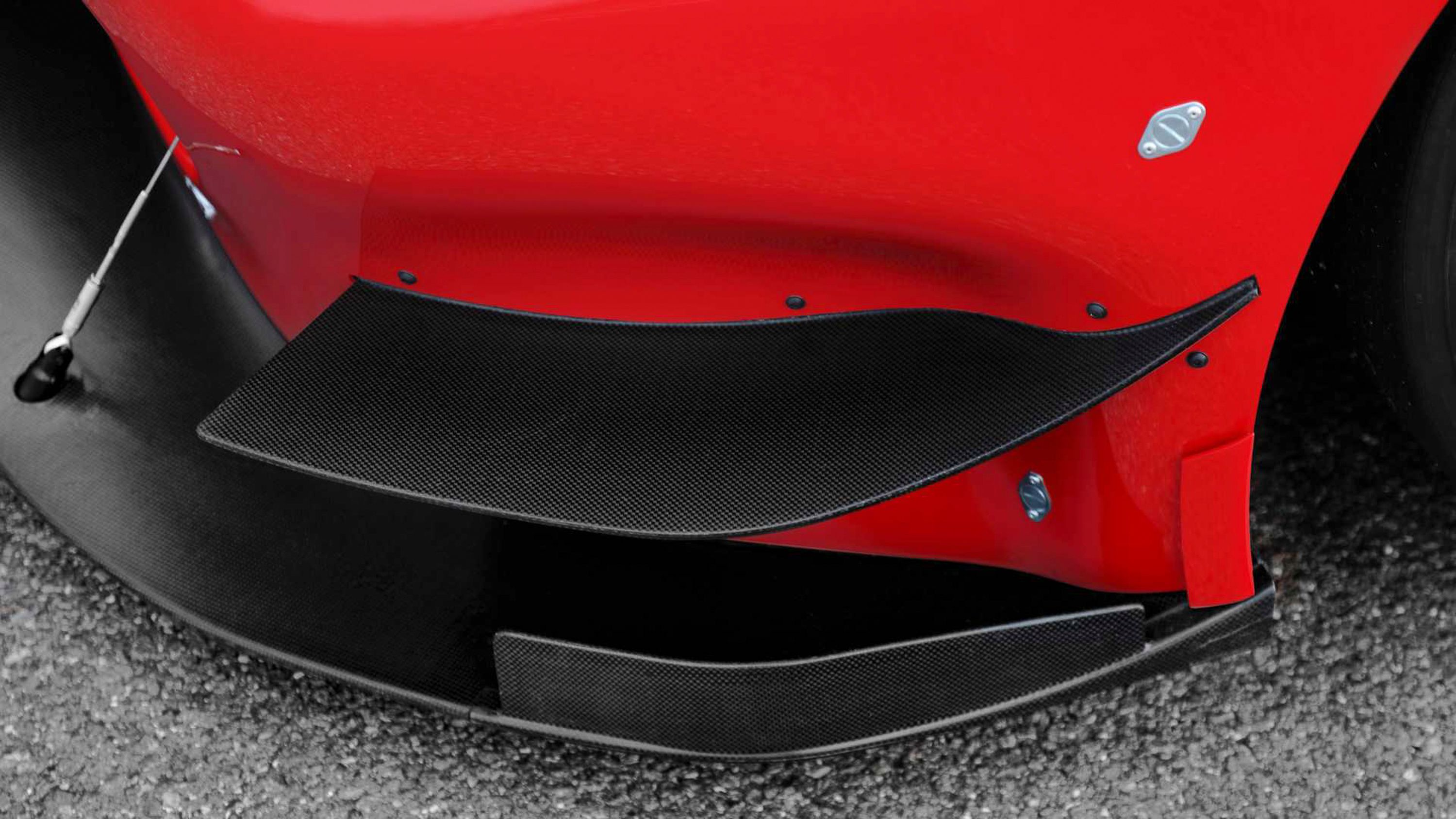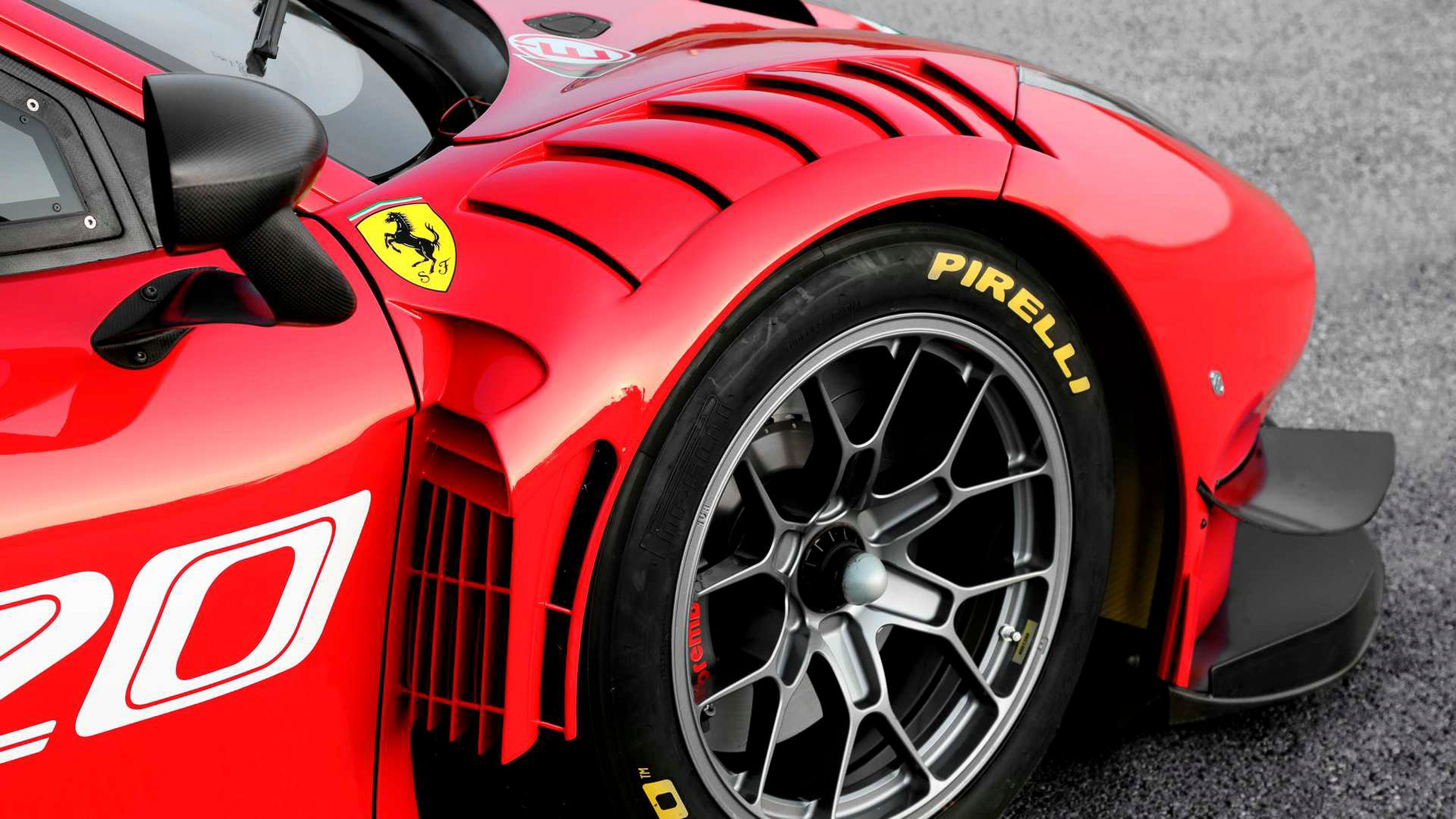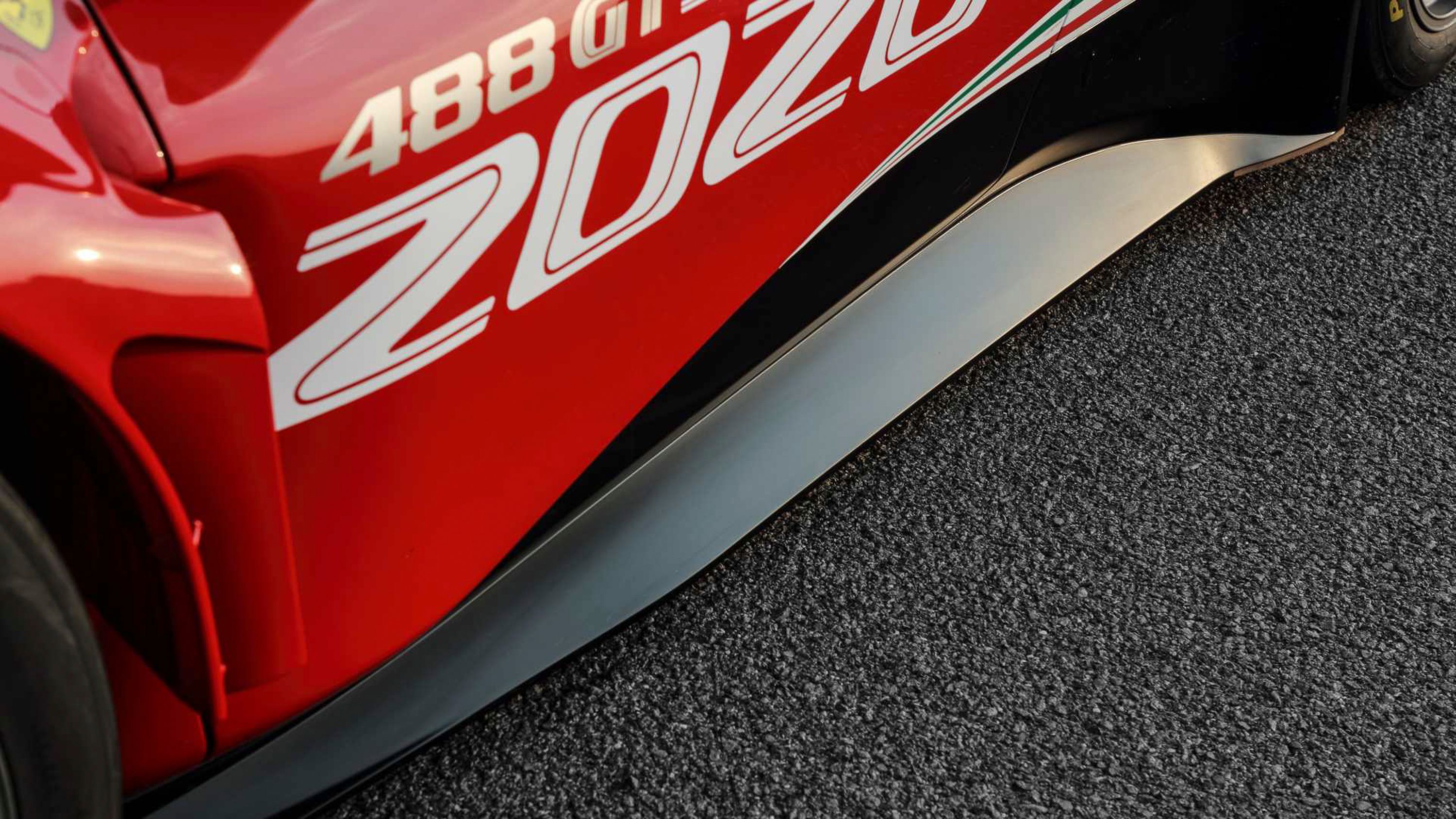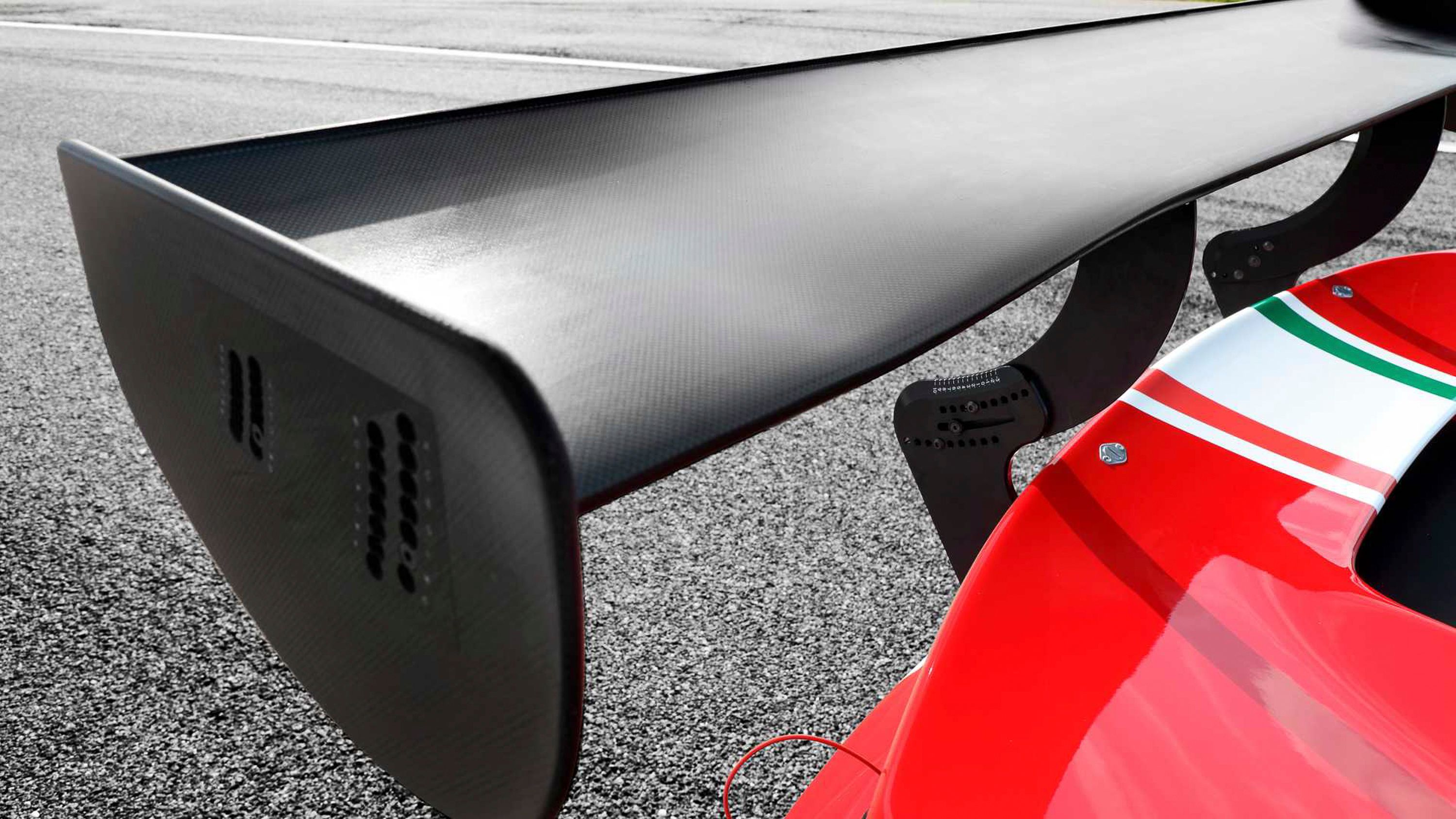You may not know it upon first glance, but this is the new-for-2020 Ferrari 488 GT3 Evo. Yes, Ferrari decided against building a GT3-spec F8 Tributo, and instead, Michelotto was tasked with updating the 488 GT3. Over 18,000 hours of calculations and CFD simulations went into it, and it now has a longer wheelbase following in the footsteps of the GTE car. Power stays at about 500-550 horsepower as per GT3 regulations, but the car will now be faster in the corners and more stable. Ferrari was also thoughtful enough to include an 'Endurance' package that works hand in hand with the new ECU, supposedly making the car more reliable and smoother.
Look across Ferrari's fence and into Mercedes-AMG's yard, and you'll see the comprehensively updated AMG GT-based GT3 car. You can't miss that humongous, viperfish-like grille in the front in much the same way you can't overlook the overhauled Porsche 911 GT3.R. That one, while still an offspring of the 991 generation, is a different beast from the original unveiled in 2015. But Ferrari isn't one to bankroll a new racing car that easily. So, Ferrari Corse Clienti customers will have to make do with this. It should be good since Russian squad SMP Racing almost won the European Blancpain Endurance Cup this year with the old car, but just how well will it measure up against its competition?
2020 Ferrari 488 GT3 EVO
- Make: Array
- Model: 2020 Ferrari 488 GT3 EVO
- [do not use] Vehicle Model: Array
The 2020 Ferrari 488 GT3 Evo looks even more like the Le Mans-bound 488 GTE now
It's been three years since the Ferrari 488 GT3 was introduced. The first turbocharged GT3 car from the Italians was at the sharp end of an ever-increasing pack of GT3 cars from the get-go. It managed to win 200 times in just three seasons, racking up countless others around the globe throughout 2019 too (including a pair of titles in the GT World Challenge America with R.Ferri Motorsport).
Ferrari suggested back in August through the voice of its Technical Director on the GT racing side of things, Ferdinando Cannizzo, that it's more likely for Michelotto to push out a 'Double Evo' package for the 488 GTE rather than developing an all-new racing car around the F8 Tributo's platform. The original 488 GTE was updated to 'Evo' specification back in 2018 to make it more driver-friendly and easier to service, and Cannizzo thinks it's entirely plausible we'll still see it on the race tracks by 2021. In this context, it's completely unsurprising to see Ferrari do the same with its GT3 competitor, especially since this is the first 'Evo' package released for the GT3 car since its debut.
Sure, Porsche and others have decided to build new cars or thoroughly update existing ones, but Ferrari isn't the only one to take a more prudent approach (although, as you'll see, the 488 GT3 Evo has been improved in many areas) in this BoP-governed world. Acura's done the same with the U.S.-minded 'Evo' package released this year that made the NSX GT3 more suitable to the rougher North American tracks than the original that boded well with smoother, F1-grade surfaces. The work put in by HPD paid dividends right away as the GTD driver's champions for 2019 in IMSA competition drove a Meyer-Shank Racing Acura. So, let's now take a closer look at this car that almost looks like the old GT3 car and the current GTE car all at once.
Unveiled during last weekend's Ferrari Finali Mondiali at Mugello, in Italy, the 488 GT3 Evo shared the stage with the latest 488 Challenge.
In the front, the 488 GT3 Evo sports a more sculpted front bumper with a narrower valance under the elongated headlights. The horizontal main grille fills up most of the area in the lower bumper and features two vertical bars that separate the outer vents from the smaller one in the middle. Turning vanes behind the meshes direct air to the front brakes and through the vents that pierce the plunging front lid.
The sculpted sides of the front overhangs allow for the fitting of extra dive planes for added frontal downforce. These winglets work together with the vertical elements of the protruding carbon fiber lip of the splitter. The lip dives lower on either side and actually goes up in the middle of the front fascia, tunneling air underneath the car to reach the generous diffuser in the back.
From the side, you'll notice the sculpted doors with an added aerodynamic appendage close to the rear edge of the door, near the inlets carved into the rear fenders. This all helps air travel smoothly towards those vents that feed air into the engine bay as well as the rear wheels. The carbon fiber exterior rear-view mirrors have remained unchanged.
In the back, the vents surrounding the rear lights have been reshaped, but the narrow inlet in the middle immediately below the rear wing arms is the same as before. The rear end's bulging bumper is formed in such a way to come almost flush with the massive diffuser in the back that features two side tunnels, a big one in the middle and added passages via turning vanes hanging from the bodywork behind the rear wheels to regulate dirty air.
The changes, however, don't stop on the outside. Jump in the cockpit, and you'll find a new, 2020-spec bucket seat with a new five-point harness and buckle by Sabelt,
Ferrari announced that you can purchase an endurance package that includes a bumper with extra light clusters for night-time driving, quick-fill couplings for engine oil and coolant, carbon-fiber clutch, brake calipers adopted from the GTE, and steel wheel nuts. Sensors for the coolant level and refueling completion with in-car idiot lights are optional. The engine, while virtually unchanged, is at the receiving end of a new ECU that supposedly guarantees a smoother, more precise torque delivery.
You'll be able to buy the 2020 GT3 Evo package if you already happen to own a 488 GT3 or, if you don't already own the car, you can put in an order for a turn-key 2020 488 GT3 Evo that will be, undoubtedly, more expensive than the 2018/19-spec car. For reference, the 488 GT3 was introduced in 2016 with an MSRP of $614,400, making it one of the pricier GT3 cars. An Audi R8 LMS GT3 Evo is about $515,000, a Huracan GT3 Evo is some $525,000, while an NSX GT3 without the latest Evo package comes in at little over $536,000. A soon-to-be-retired AMG GT3 cost last year just $453,510, cheaper even than the 911 GT3.R. Again, even in the racing arena, Ferrari holds its head up high in the clouds with what can be considered as ridiculous price tags but, in fact, the 488 GT3 is one of the most popular GT3 racers out there with much cheaper offerings from Nissan being almost absent from many top-tier series around the world. We're confident, then, that you'll see a 488 GT3 Evo at a track near you next year almost certainly!
A Short History of Ferrari's GT Racing Heritage
Ferrari wasn't particularly keen on GT racing before the dawn of the new millennium. For whatever reason, the Prancing Horse was mostly reserved for the Ferrari Challenge single-make series throughout the '90s, bar from those ludicrous F40s that took the fight to the F1 GTR in the BPR series and elsewhere. But then, Italtechnica built a GT-spec Ferrari 550 Maranello. The engine was bored out to 6.0-liters, and output grew to an outrageous 600 horsepower. The protruding splitter, widened wheel arches, and towering rear wing completed the look of a menacing and ear-splittingly loud racing car that caught everyone's attention by... retiring all too often.
Seeing what the Britsh could do, Ferrari itself felt there's room for more. It contracted N-Technology, the firm responsible for the race and championship-winning Alfa 156 GTA touring cars, to work alongside Michelotto to develop a GT version of the 550 for the '03 season. Two chassis were built with Italtechnica bodywork. They'd be run alternatively alongside an Italtechnica chassis, both cars prepped for the races by the JMB Racing squad from Monaco. It was all part of Ferrari's plan to launch its first official racing car in many years, the 575 GTC.
Instead, from 2006, Ferrari's Customer Racing department, Ferrari Corse Clienti, focused on offering GT2 and GT3 cars. Michelotto had more experience at building racing versions of Ferrari's junior mid-engine models as it turned both the 355 and the 360 into rather successful weapons for the race track. In spite of all that, it was JMB Racing that built the first batch of F430 GT3 cars while Michelotto focused on the GT2 cars. These first GT3s were heavily based upon the F430 Challenge. Then, in '09, Kessel Racing took over and developed the 430 Scuderia GT3 as the replacement for the F430 GT3.
















